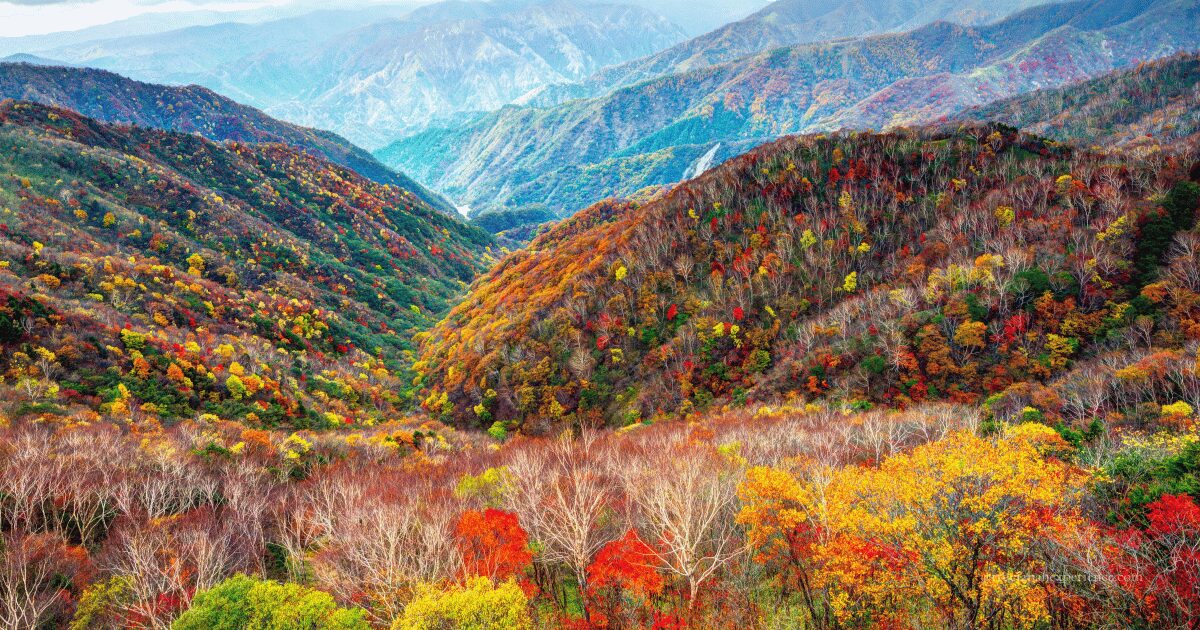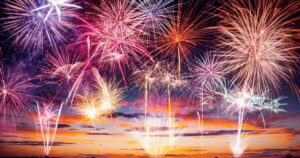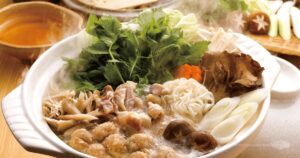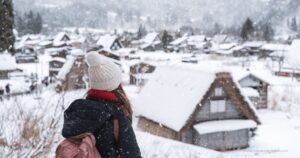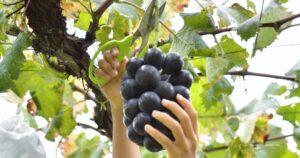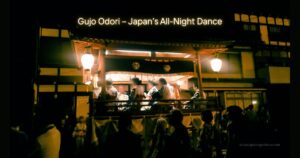Autumn leaves in Japan attract millions of visitors every year.
From peaceful temples in Kyoto to lakeside views of Mount Fuji, the fall season turns the country into a world of red, gold, and orange beauty.
Here’s how to enjoy Japan’s most magical time of year.
What Makes Autumn Leaves in Japan Special
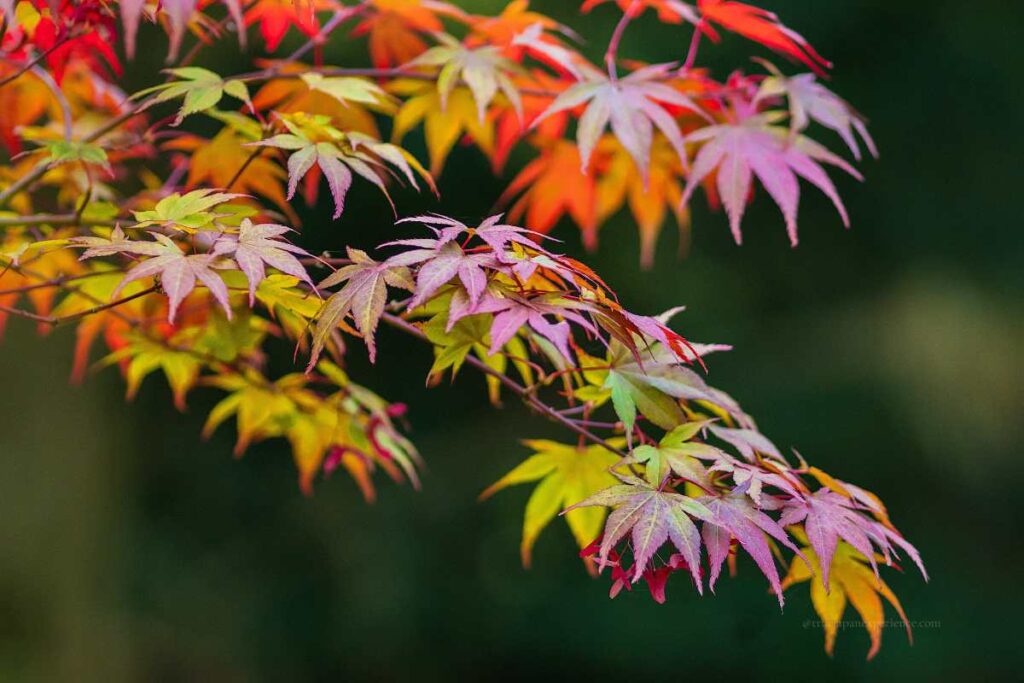
Autumn in Japan is more than just colorful trees. It’s a full experience that mixes nature, culture, and beauty.
In many places around the world, fall colors are mostly one color—like red or yellow. But autumn leaves in Japan show many colors at once: red, orange, yellow, and even green. This is because Japan has many types of trees that change colors differently.
Also, the settings are unique.
Imagine red maple leaves next to an old temple gate, or yellow ginkgo trees along a quiet street. Lakes, mountains, gardens, and shrines all become part of the scene. This mix of colors and culture is why autumn in Japan feels so special.
You don’t just see the leaves—you feel the season.
When to See Autumn Leaves in Japan
The timing depends on where you are. Japan is long from north to south, and the mountains also make a difference. Here’s a general idea:
・Hokkaido: Late September to Early October
・Tohoku & Tokyo area: Mid October to Early December
・Kyoto, Osaka & Kyushu: Late November to Mid December
So, you can find autumn colors somewhere in Japan for more than two months!
But recently, fall is coming later. The weather stays warm longer, and that makes the leaves change color later too.
Here are some things to know:
・Leaves start to change when it gets colder, below 8°C (46°F) at night
・Warm autumns mean the colors come later and may not be as bright
・In some years, the leaves dry up and fall before they turn red
・In Tokyo, the start of maple leaf season is getting later year by year
・In the mountains, even in Hokkaido, colors are now delayed by up to two weeks
So before you go, it’s good to check a local forecast or leaf map online. The best timing can change every year.
Japan’s Top Autumn Leaf Spots: Explore the Best Places for Fall Colors
Autumn leaves in Japan can be enjoyed in many different places.
From ancient cities to mountain lakes, each area has its own charm. Some spots are famous around the world, while others are peaceful and less crowded.
In this section, we’ll introduce five of the best areas in Japan to see beautiful fall colors.
Kyoto: The Most Famous Fall City in Japan

Kyoto is one of the top places in the world to enjoy autumn leaves.
Every November, the city welcomes travelers from Japan and abroad. The colorful trees, together with old temples and quiet streets, create magical views you won’t find anywhere else.
But Kyoto’s autumn is also very popular—sometimes too popular. Crowds and traffic can be a problem, especially on weekends. So it’s good to plan ahead.
When to See Fall Leaves in Kyoto (and How to Enjoy Them)
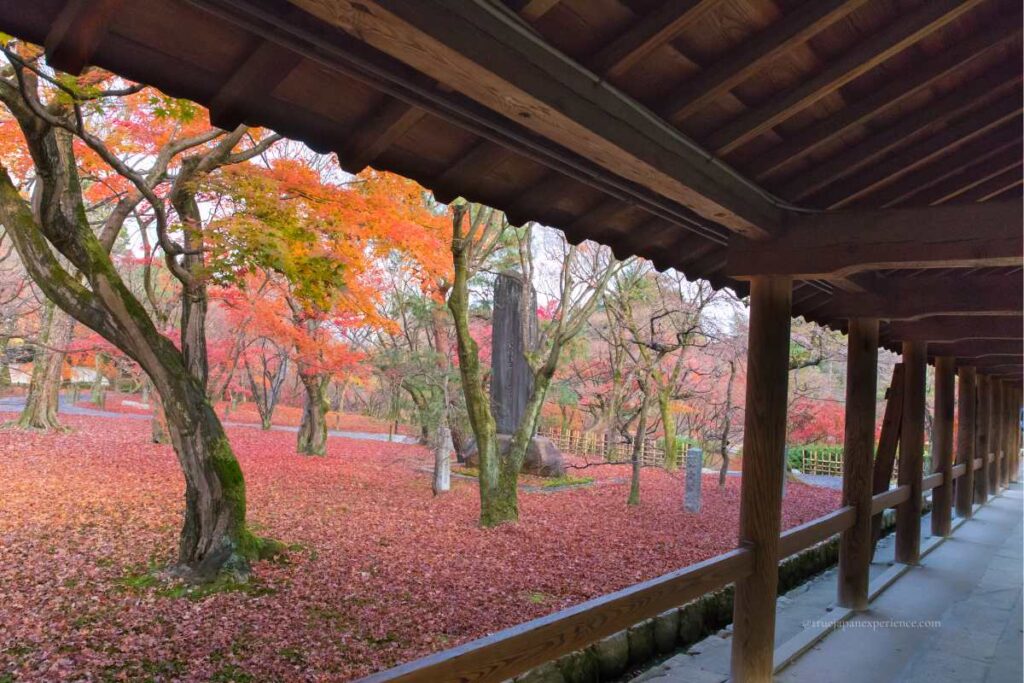
The best time to see autumn leaves in Kyoto is from mid to late November. In most years, the season runs from early November to early December.
In the northern areas like Takao, Kurama, and Kibune, the leaves start changing around mid-November. In the city center—at famous spots like Kiyomizu Temple, Eikando, and Kodaiji—the peak usually comes in late November to early December.
Here are some helpful tips to make the most of your autumn visit:
Top Places to See Autumn Leaves in Kyoto
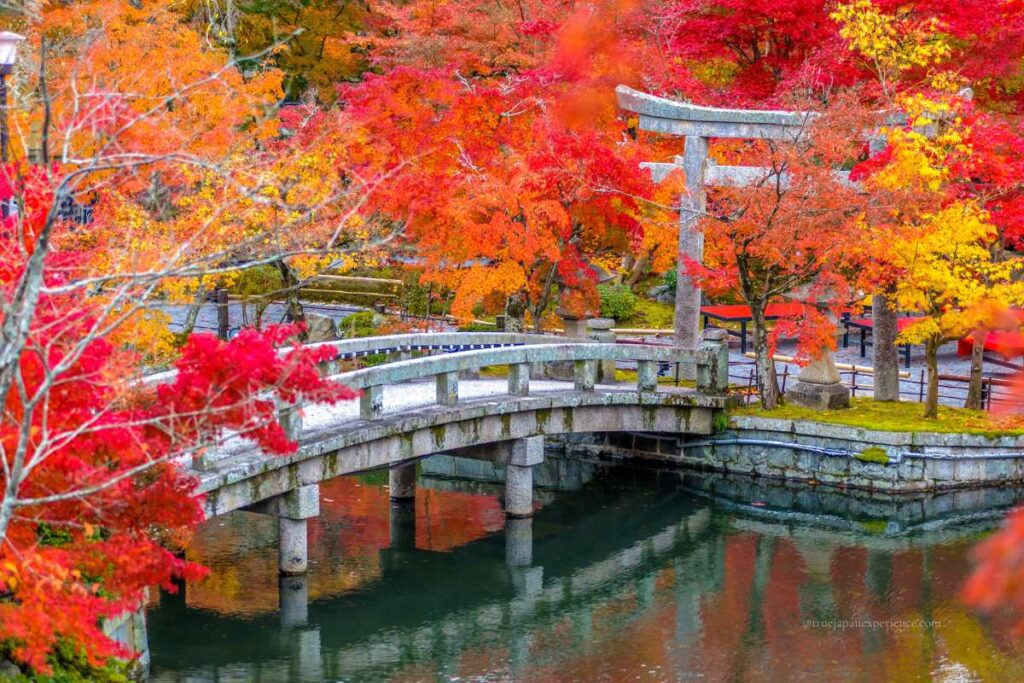
Kyoto is full of famous fall foliage spots, from temples to riversides. Each area has its own character, and the best viewing times vary slightly by location. Here’s a simple guide to help you plan your visit.
| Area | Main Spots | Best Viewing Time | Highlights |
|---|---|---|---|
| Arashiyama & Sagano | Togetsukyo Bridge, Tenryu-ji, Hogon-in, Jojakko-ji | Late Nov – Early Dec | Mountains turn red; riverside views are stunning |
| Higashiyama | Kiyomizu-dera, Kodaiji, Shoren-in, Chion-in | Late Nov – Early Dec | Historic buildings + foliage; many light-up events |
| Around Ginkaku-ji | Eikando, Nanzen-ji, Philosopher’s Path, Tenjuan | Mid – Late Nov | “Momiji at Eikando” is Kyoto’s top autumn spot |
| Around Kinkaku-ji | Kitano Tenmangu, Genko-an, Ninna-ji | Mid – Late Nov | Historical sites with colorful leaves; many hidden gems |
| Shoren-in | Shoren-in Light-Up | Mid Nov – Early Dec | Known for dreamy nighttime lighting |
| Uji | Uji River Walk, Byodo-in | Late Nov – Early Dec | Beautiful scenes near water |
Special Light-Up Events in Kyoto
Many temples open at night during the fall season and light up the gardens and trees. These events feel dreamy and are great for photos.
Popular light-up spots include:
・Eikando (Zenrin-ji)
・Kodaiji Temple
・Kiyomizu-dera
・Toji Temple
・Hogon-in in Arashiyama
・Kitano Tenmangu Shrine
Many temples in Kyoto hold special autumn light-up events during the season. Each place has its own schedule, so it’s a good idea to check the official websites before you go.
If you want to know more about autumn in Japan or are planning a trip during the season, check out the following articles:
⇒ Find Your Own ‘Autumn of _’: How Japanese People Celebrate the Season
⇒ Japan Autumn Weather: What to Expect and What to Wear
Nikko: Long Autumn Season with Mountains and Waterfalls
Nikko is a mountain town full of history and nature. It’s home to temples, lakes, waterfalls, and deep forests. The area is large, and the altitude changes a lot.
So you can enjoy autumn leaves in Japan here from late September to mid-November, depending on where you go.
In the highlands, the leaves start changing early. In lower areas like the town center, they change later. This means you can enjoy the colors for a long time.
Best Time for Autumn Leaves in Nikko

One of the best things about autumn in Nikko is its wide range of elevations, which means the fall season lasts longer than in many other areas of Japan.
In the highland areas, such as Senjogahara and Odashirogahara, the leaves usually start turning from late September to early October. These areas are known for open marshlands, golden grasses, and the gentle colors of larch and birch trees.
Around mid-level spots, including Lake Chuzenji, Kegon Falls, and Irohazaka, the best time to see the foliage is mid to late October. These places are especially stunning, as the colorful trees reflect beautifully in the water and around the dramatic cliffs.
Closer to downtown Nikko, where famous sites like Toshogu Shrine and Shinkyo Bridge are located, the fall colors typically peak from late October to mid-November. The bright red and yellow leaves surrounding these historic buildings create a perfect mix of culture and nature.
Thanks to these elevation changes, you can enjoy a full month or more of colorful scenery in Nikko—just by moving from the mountains down into town.
Top Autumn Spots in Nikko
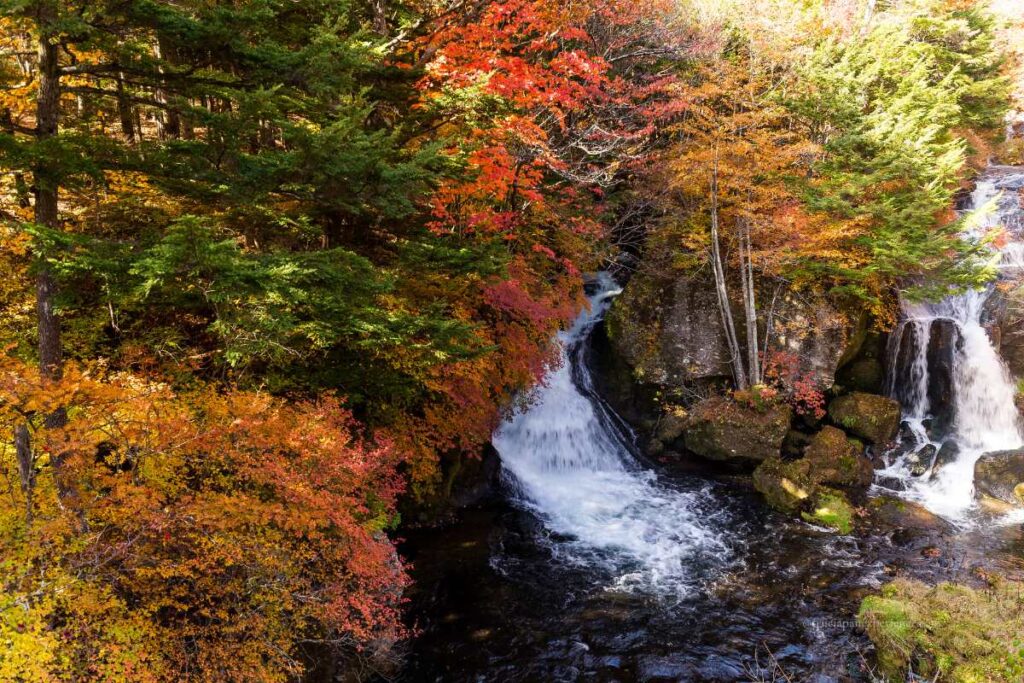
Nikko is one of the best places in Japan to enjoy a long and colorful autumn. From mountain roads to quiet marshlands, temples to waterfalls, there’s a wide range of scenic spots worth visiting.
Below is a list of popular places with their typical peak times and highlights:
| Spot | Best Time | Highlights |
|---|---|---|
| Irohazaka Road | Mid Oct – Early Nov | Colorful mountain drive |
| Lake Chuzenji | Mid – Late Oct | Reflections on the lake |
| Kegon Falls | Mid Oct – Early Nov | Powerful falls + leaves |
| Akechidaira Plateau | Mid Oct – Early Nov | Scenic ropeway views |
| Senjogahara Marshland | Late Sep – Early Oct | Golden grassland colors |
| Odashirogahara | Late Sep – Early Oct | Birch trees & peaceful view |
| Ryuzu Falls | Early – Mid Oct | Falls with forest trail |
| Toshogu Shrine | Late Oct – Early Nov | Leaves around historic shrine |
You can enjoy different colors and moods depending on the area’s elevation and timing.Each spot shows a unique side of autumn in Nikko—whether you’re looking for a quiet stroll or a powerful natural view.
Check local websites for real-time updates on foliage and traffic before you go!
Tips for Visiting Nikko in Autumn
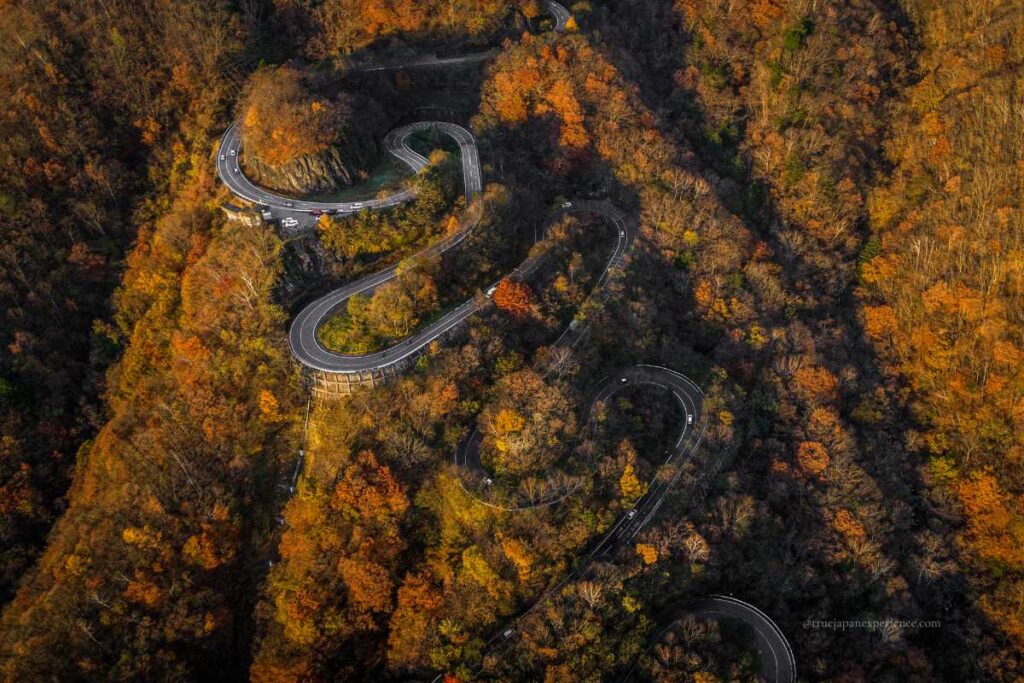
If you’re planning an autumn trip to Nikko, there are a few important things to know before you go—especially about traffic, crowds, and the weather.
First of all, Irohazaka, the winding mountain road leading up to Lake Chuzenji, is known for heavy traffic during the fall foliage season. On busy weekends, it can sometimes take up to three hours to pass through.
If you’re driving, it’s best to arrive before 8:00 AM to avoid long delays. In general, weekdays are less crowded than weekends, but be aware that Nikko attracts large numbers of visitors regardless of weather—even on rainy days, it’s still busy.
The mountain air can be surprisingly cold, especially in the early morning and evening. Be sure to bring warm clothing and some snacks or drinks, as shops may not always be close by depending on where you go.
While Kyoto is famous for its many night illuminations, Nikko also hosts special evening events during the autumn season. Locations like Lake Chuzenji, Irohazaka, and Toshogu Shrine sometimes offer limited-time light-up displays. These are not held every year or at fixed times, so be sure to check local tourism websites for the latest details before your visit.
Whether you’re chasing bright leaves, peaceful nature, or cultural sites, being prepared will help you make the most of your autumn adventure in Nikko.
Hakone: Hot Springs, Art, and Fall Colors
Hakone is a great place to enjoy autumn leaves and a relaxing hot spring bath. The town is in the mountains near Mt. Fuji, and the color timing changes by area.
You can enjoy fall colors in many ways: on a train, from a ropeway, in a garden, or from a lakeside hot spring.
When to See Autumn Leaves in Hakone
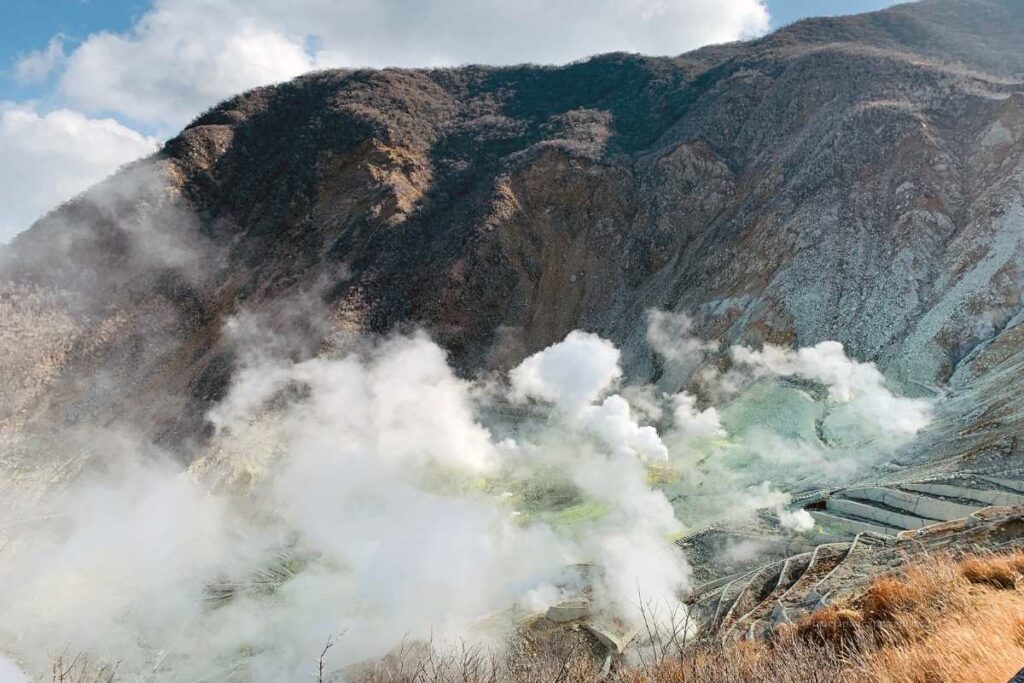
Hakone is a popular autumn destination thanks to its scenic beauty and wide range of elevations. Because of this, the fall foliage season lasts longer than in many other places—and the timing varies by area.
In the higher elevations, such as around Lake Ashi (Ashinoko) and Sengokuhara, the leaves usually begin to change in early to mid November. These areas are surrounded by forests and mountains, and the cool, crisp air adds to the charm of the golden and red foliage.
Moving to the mid-level areas like Gora and Kowakudani, the peak comes slightly later—typically in mid to late November. These spots are home to beautiful gardens and hot springs, offering a relaxing setting to enjoy the colors.
Finally, the lower parts of Hakone, including Hakone Yumoto, tend to reach their best around late November to early December. If you miss the earlier peaks, this area still offers a beautiful and quiet chance to enjoy autumn late into the season.
Because of the elevation changes, Hakone allows you to enjoy the foliage across several weeks. Just plan ahead, and you’ll be able to catch the best colors no matter when you visit.
Best Spots for Autumn Leaves in Hakone
Hakone is a perfect place to enjoy Japan’s fall colors thanks to its mountain scenery, hot springs, and peaceful lake views.
Each area shows a slightly different charm depending on the elevation and timing. Here are some of the top places to visit during the autumn season:
| Spot | Best Time | Highlights |
|---|---|---|
| Around Lake Ashi | Early – Mid Nov | Lake view + Mt. Fuji |
| Sengokuhara | Mid – Late Nov | Grass field + foliage walk |
| Gora & Kowakudani | Mid – Late Nov | Art + hot springs |
| Hakone Tozan Railway Route | Early – Mid Nov | Scenic train ride |
| Hakone Yumoto & Hayakawa Gorge | Late Nov – Early Dec | Late leaves + cozy onsens |
Local Tips for Hakone
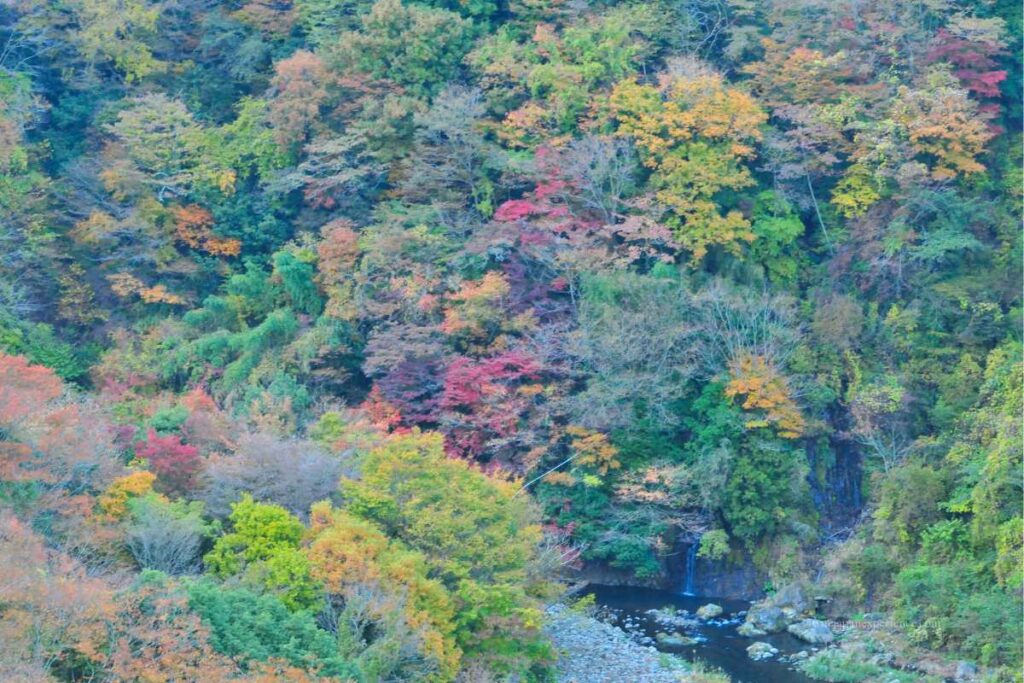
Traveling in Hakone during the autumn season is a wonderful experience, but a bit of planning can help you enjoy it even more.
Public transportation like trains, cable cars, and ropeways can get very crowded—especially on weekends during peak foliage. To avoid long lines, it’s best to arrive early in the morning.
Also, the mountain air can be surprisingly cool even during the day, so make sure to bring warm clothing to stay comfortable.
Unlike Kyoto, Hakone doesn’t have many large-scale light-up events.
However, the Japanese garden at the Hakone Museum of Art sometimes opens in the evening from mid to late November.
Be sure to check local guides or websites before your visit to catch any limited-time events.
Fuji Kawaguchiko: Mt. Fuji and Maple Leaves Together
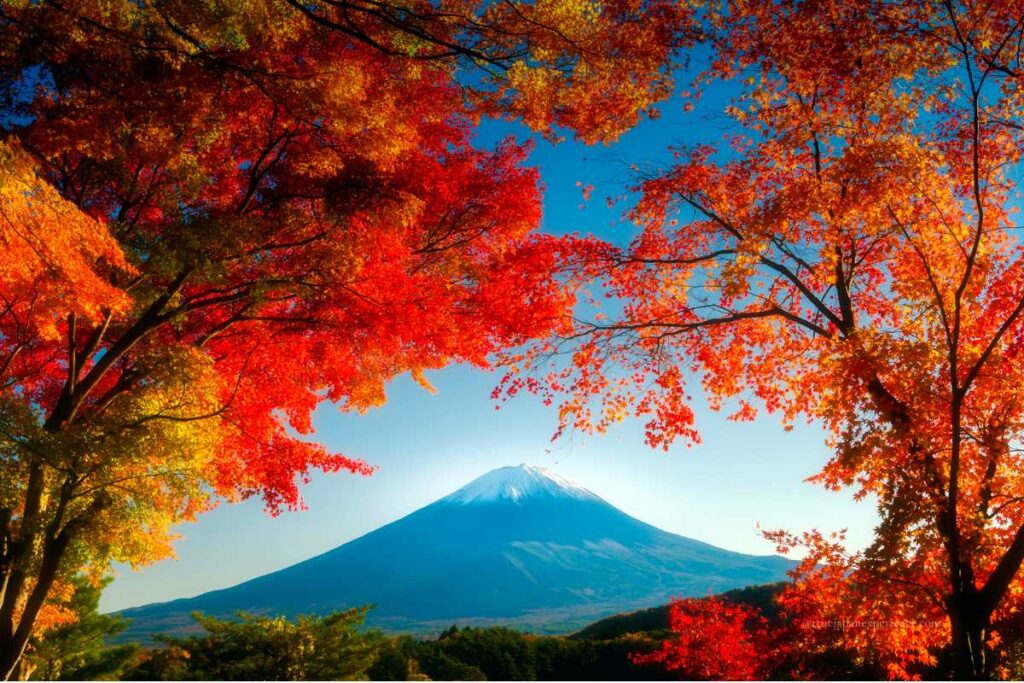
This is one of the best places in Japan to enjoy autumn leaves and Mt. Fuji at the same time. The view is like apostcard—so beautiful it doesn’t feel real.
The area starts changing color in late October, and the best time is from early to mid-November.
Best Spots Around Kawaguchiko
Kawaguchiko is one of the most iconic places in Japan to enjoy autumn leaves with Mount Fuji as the backdrop. From tunnels of maple trees to panoramic views, here are the must-see spots:
| Spot | Highlights |
|---|---|
| Momiji Corridor | View Mt. Fuji through a tunnel of autumn leaves |
| Momiji Tunnel | Famous photo spot with framed view of Mt. Fuji |
| Oishi Park | Lakeside park with Mt. Fuji and colorful gardens |
| Mt. Fuji Panoramic Ropeway | Overlook of lake, fall colors, and Mt. Fuji from above |
| Arakurayama Sengen Park | Five-story pagoda with Mt. Fuji and red maple trees |
Each location offers a different angle of the stunning autumn scenery. You can enjoy peaceful walks, take incredible photos, or just relax while surrounded by nature’s colors.
Tips for Visiting Kawaguchiko in Autumn
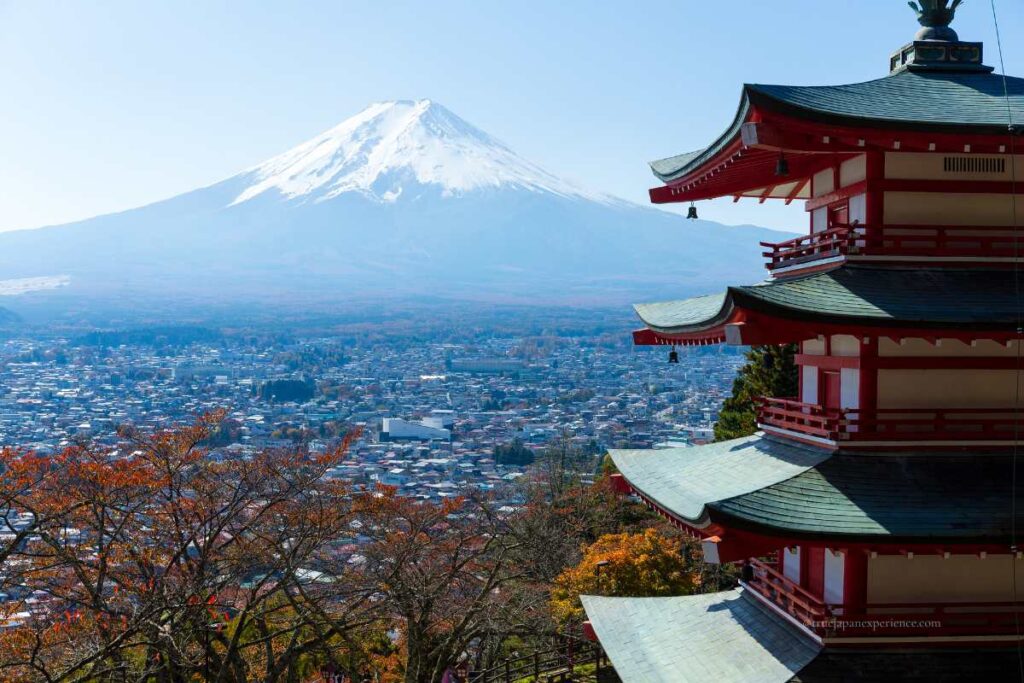
Kawaguchiko gets very crowded in autumn, especially during the Momiji Festival. If you’re planning to enjoy the colorful leaves and Mt. Fuji views in peace, it’s best to visit on weekdays or early in the morning before the crowds arrive.
Even though the days may feel mild, the weather can get quite chilly in the evening, especially if you’re staying for a light-up event. Make sure to bring a warm jacket or layers to stay comfortable.
For the best photos of Mt. Fuji framed by autumn leaves, head to the north side of the lake—this area offers the clearest views and most iconic spots.
Parking is available in several places around the lake, but during festival season, spaces fill up quickly.
By planning ahead, you can enjoy a relaxed and unforgettable autumn experience at Kawaguchiko.
Tokyo: Easy-to-Reach Fall Spots in the City

You don’t need to leave the city to experience Japan’s beautiful fall colors. Even in the heart of Tokyo, there are peaceful parks and historic gardens where you can enjoy golden ginkgo trees, bright red maples, and quiet paths full of autumn charm.
Whether you’re here for a short trip or just looking for a relaxing afternoon, these spots offer a perfect taste of Japan’s fall—without the long travel.
Meiji Jingu Gaien
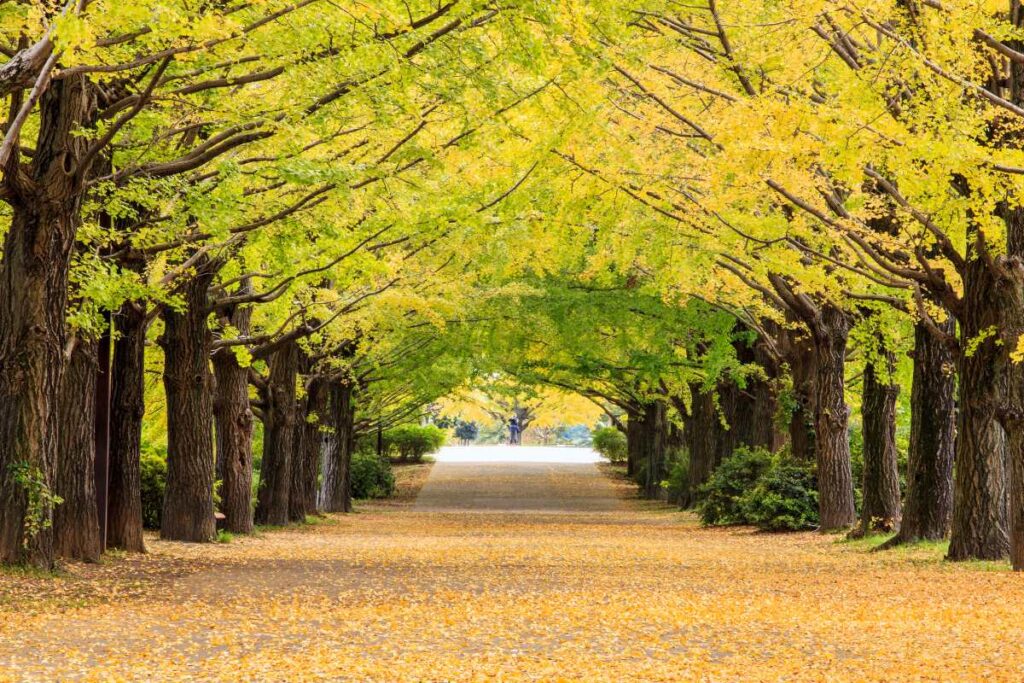
Every autumn, Meiji Jingu Gaien transforms into one of Tokyo’s most iconic seasonal sights.
The long path lined with about 300 golden ginkgo trees becomes a glowing tunnel of yellow leaves, attracting photographers and visitors from all over the world.
The symmetry of the trees and the way the light filters through the golden canopy make it one of the most photogenic fall spots in Japan.
The atmosphere is lively, especially during peak season, with couples, families, and tourists all soaking in the beauty.
Best time to visit: Mid to late November
Access: Gaienmae Station or Sendagaya Station
Tip: To avoid the crowds and get the perfect photo, come early in the morning on a weekday.
Rikugien Garden
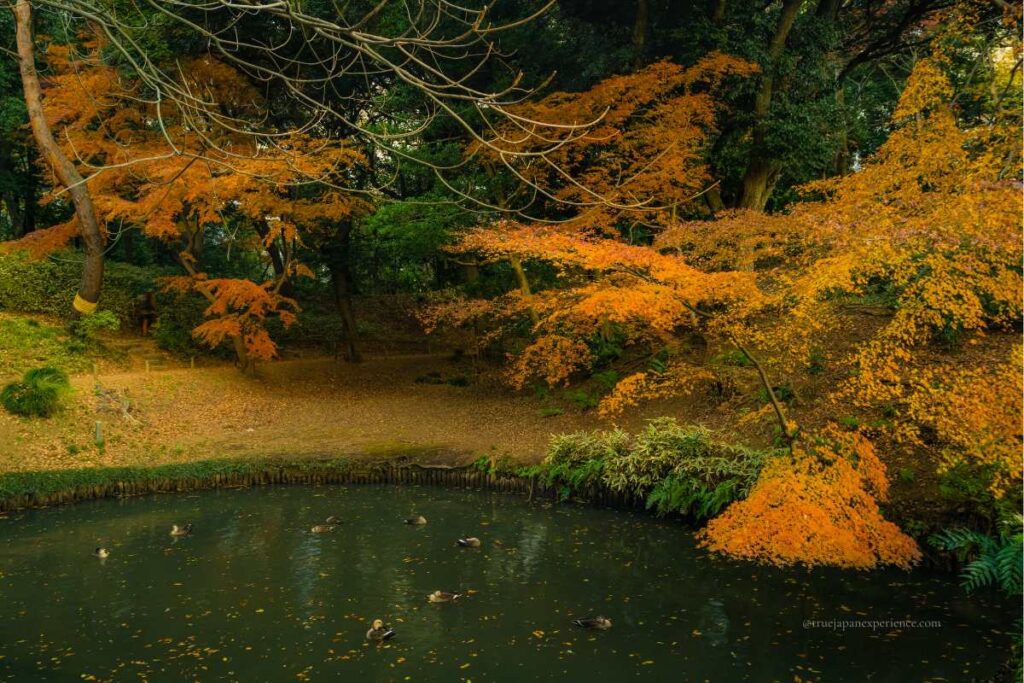
Rikugien Garden is a peaceful place to enjoy autumn in Tokyo.
This traditional Japanese garden has a big pond, small bridges, and a teahouse. In late fall, the trees turn bright red and orange, and the colors reflect beautifully on the water.
Walking through the garden feels calm and relaxing, almost like going back in time. It’s quiet and not too crowded, so you can take your time and enjoy the colors at your own pace.
Best time to visit: Late November to early December
Access: Komagome Station or Sengoku Station
Special event: In late November, a light-up event is usually held. In 2024, it ran from November 22 to December 4.
Compared to Meiji Jingu Gaien, Rikugien is quieter and perfect for a slow, thoughtful stroll through Tokyo’s autumn charm.
Summary: How to Enjoy Autumn Leaves in Japan
Japan is one of the best countries in the world to enjoy fall colors. From the bright reds of maple trees to the golden tunnels of ginkgo leaves, every place has its own charm.
Here’s how to make the most of your trip:
・Check the best time and place—it changes by region and year
・Use trains and buses—roads can get very crowded
・Wake up early—mornings are calm and beautiful
・Wear layers—some areas are cold, even in the day
・Try night visits—light-up events are magical
Whether you explore Kyoto’s old temples, ride a train in Hakone, or snap a perfect photo of Mt. Fuji and red leaves in Kawaguchiko, Japan’s autumn will stay in your heart forever.
If you want to know more about autumn in Japan or are planning a trip during the season, check out the following articles:
⇒ Find Your Own ‘Autumn of _’: How Japanese People Celebrate the Season
⇒ Japan Autumn Weather: What to Expect and What to Wear
Looking for a place to stay during your autumn trip to Japan?
